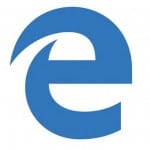 Microsoft will soon stop supporting older versions of Internet Explorer and will only continue to support Internet Explorer (IE) 11 and their new Edge web browser.
Microsoft will soon stop supporting older versions of Internet Explorer and will only continue to support Internet Explorer (IE) 11 and their new Edge web browser.
In fact, you may begin receiving prompts to upgrade your version of IE from Microsoft. This raises a common question regarding browser compatibility issues with the various applications and tools we use on a daily basis.
What browsers are available?
Microsoft Internet Explorer/Edge, Firefox and Chrome are the most popular browsers. It is recommended that you have at least two if not all three of these browsers installed on your computer.
Should I upgrade my browser when prompted?
Yes! The vendors provide upgrades to the browser software on a regular basis. Most of these upgrades include critical security patches to ensure the safety of your browsing sessions. Failing to install the latest version makes your system vulnerable.
What do I do if my web applications aren’t working?
When vendors develop the upgrades, they are not able to test their upgrades with every application on the market. Unfortunately, it is not unusual for a website or web application to “break” with a particular update. Thus, it is beneficial to know a few troubleshooting steps when you encounter issues with an application:
- Clear the browser cache and relaunch the browser completely
Sometimes, the temporary files behind the scenes cause issues. Clearing the browser cache and restarting the browser completely often fixes application issues. - Try a different browser
If one browser isn’t working right with your application, try launching that application in a different browser. Believe it or not, the applications may function a little differently in each browser. - Use the browser compatibility option in Internet Explorer
Because application developers are not always able to integrate new changes in the browser code quickly, browsers have several tools built in to fix compatibility issues. It is often helpful to know how to activate these tools if you really want to continue using a specific browser. For example– in Internet Explorer, click the gear icon and select Compatibility View Settings.
For additional troubleshooting tips for each browser, click on the appropriate links below



